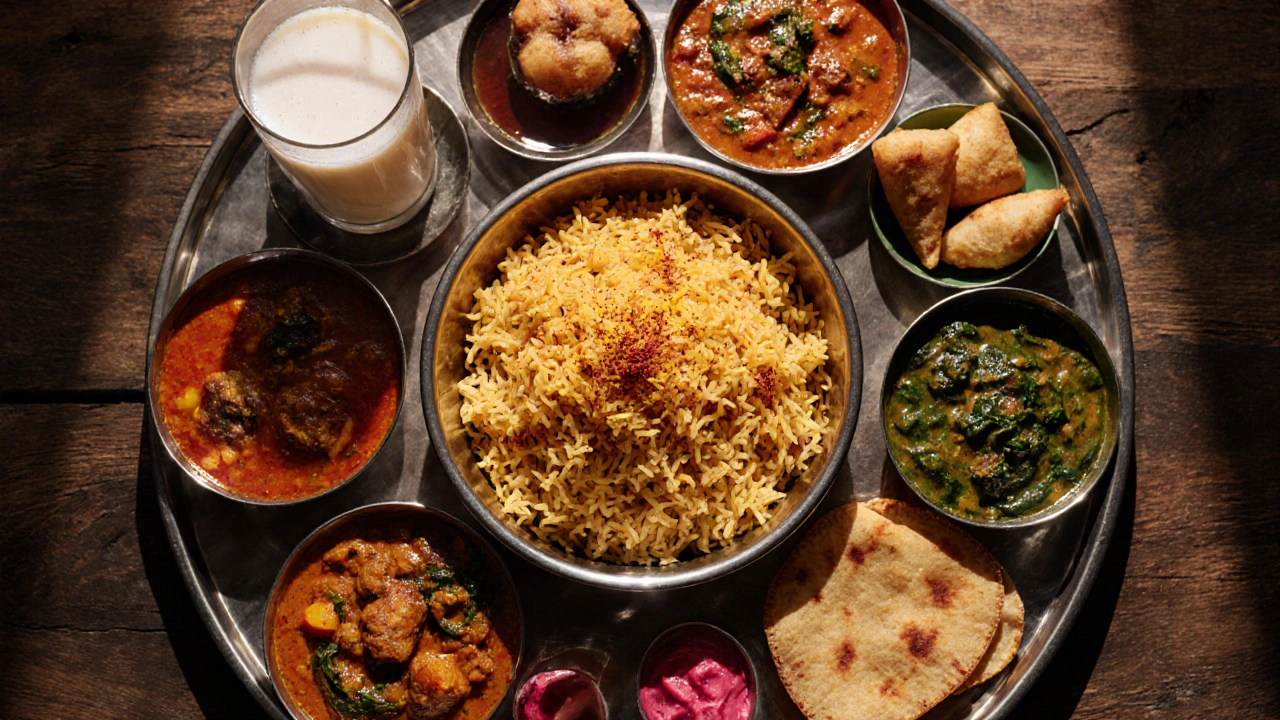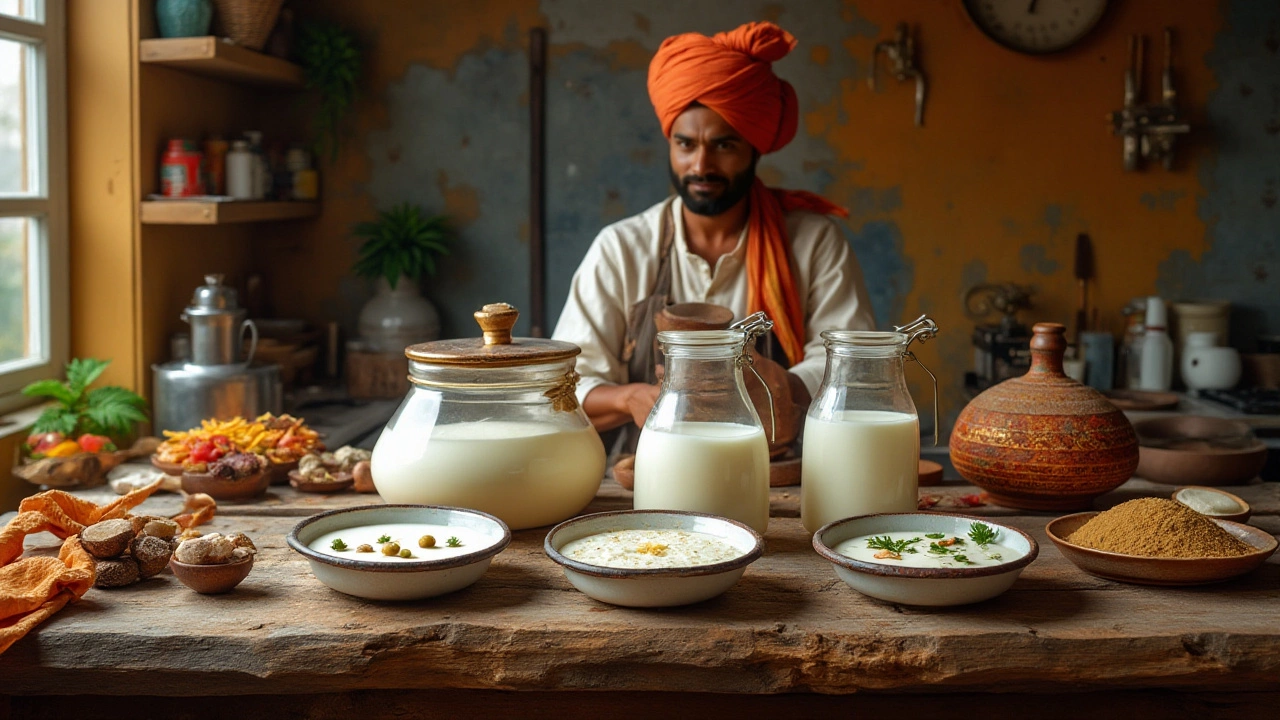Traditional Indian Recipes
When working with Traditional Indian Recipes, the time‑honored dishes that reflect India's diverse regions and cooking traditions. Also known as classic Indian meals, they bring together spices, techniques, and local ingredients in a way that few cuisines do. Biryani, a layered rice and meat or veggie dish famous for its fragrant spices and bright colors is a star player, while Dal, protein‑rich lentil stews cooked with aromatics and sometimes tempered with ghee provides everyday comfort. Roti, the daily unleavened flatbread that pairs with almost any curry shows the simplicity of Indian breads, and Curry, a broad term for saucy dishes built around spices, herbs, and a base of tomatoes or yogurt ties everything together. Together these foods illustrate how traditional Indian recipes encompass regional specialties, require specific techniques, and celebrate bold flavors.
One key to mastering these dishes is understanding the role of spices. For instance, biryani relies on whole spices like cardamom, cloves, and cinnamon to create depth, while dal often uses cumin and mustard seeds for a warm backdrop. Roti’s texture hinges on the right flour‑to‑water ratio and the heat of the tawa, and curry’s creaminess can come from coconut milk, yogurt, or a nut paste. Each component influences the next: a well‑spiced dal can elevate a simple roti, and a fragrant biryani can become the centerpiece of a festive feast. Recognizing these connections helps you tweak recipes for your pantry and taste buds.
Another practical angle is the technique behind each dish. Biryani requires layered cooking—partially cooked rice meets marinated meat or veg, then everything is sealed and cooked on low heat (the “dum” method). Dal benefits from soaking and proper washing to reduce cooking time and improve digestibility. Roti needs a rested dough, a hot pan, and a quick flip to puff up. Curry often starts with a “tempering” step where spices sizzle in oil, releasing their oils before adding the main ingredients. These steps form a chain of actions: mastering one technique often makes the others easier, because the same skills—like controlling heat and timing—reappear across recipes.
Seasonality and regional variations also shape what you’ll find in traditional Indian recipes. In the north, wheat‑based breads like roti and naan dominate, while the south favors rice‑based dishes such as dosa and idli. Coastal areas add coconut and seafood to their curries, whereas the interiors lean on dairy and legumes. Biryani itself has many regional twists: Hyderabadi biryani emphasizes saffron and fried onions, while Kolkata biryani includes boiled eggs and potatoes. Knowing these variations lets you pick a version that matches your ingredient list or the flavor profile you crave.
Health considerations are built into many of these dishes, too. Dal offers a plant‑based protein source with fiber and iron, roti provides complex carbs when made with whole‑grain flour, and biryani can be lightened by using brown rice and lean proteins. Curry sauces can be adjusted to reduce oil or swap cream for coconut milk for a dairy‑free option. By swapping a few ingredients, you keep the authentic taste while meeting modern dietary needs.
Cooking tools make a difference as well. A heavy cast‑iron tawa helps roti puff up, a tight‑fitting lid is essential for the dum method in biryani, and a good stainless‑steel saucepan ensures dal doesn’t stick. Even a simple mortar and pestle can elevate your spice blends, releasing essential oils that a blender might miss. Investing in a few key pieces can streamline the process and improve consistency across all traditional Indian recipes.
Finally, timing and patience are the unsung heroes. Letting dough rest, allowing spices to bloom, and giving biryani enough time to steam are all steps that can’t be rushed. Skipping these moments often leads to flat roti, bland dal, or a biryani that falls apart. Treat each stage as a small ritual, and you’ll notice the flavor depth grow with each bite.
Below you’ll discover a curated set of posts that dive deeper into each of these topics—whether you want to perfect a fluffy roti, master the art of biryani layering, boost dal nutrition, or unlock the secrets of a silky curry. Each article offers practical tips, science‑backed explanations, and easy‑to‑follow steps to help you bring authentic Indian flavors to your kitchen.

Classic Indian Dishes Explained: Definition, Top Examples & Regional Guide
Explore what makes a dish a classic Indian dish, discover top examples like Biryani, Masala Dosa and Butter Chicken, and learn how regional origins shape India's iconic meals.

Discover the Varieties of Milk Consumed in India
India, a nation renowned for its culinary diversity, embraces a wide array of milk types, each playing a vital role in its traditional recipes. From the creamy richness of buffalo milk to the distinct taste of camel milk, understanding these types can unlock new flavors in cooking. This article delves into the various kinds of milk prevalent in Indian cuisine, offering insights into their uses and benefits. Whether you're a seasoned cook or a curious enthusiast, uncover the secrets of Indian dairy choices and how they enrich your dishes.